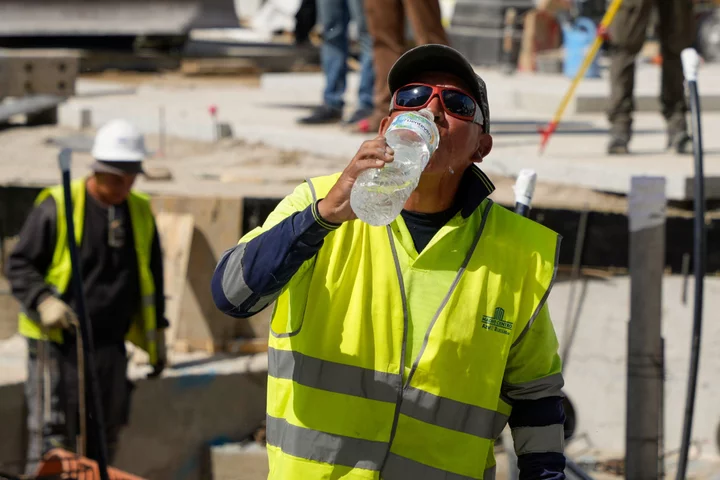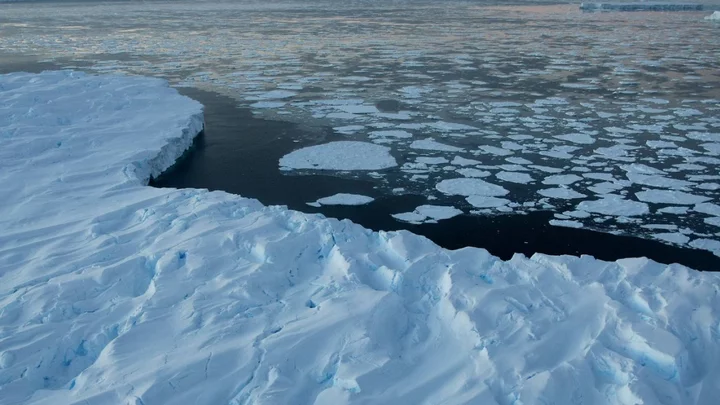Global temperatures are likely to temporarily breach the 1.5C of warming threshold for at least one of the next five years, according to a new World Meteorological Organization forecast.
In its annual update predicting near-term global annual average temperatures, the WMO said there is a 66% chance that the world could cross the key threshold between 2023 and 2027. This marks the first time that the organization has forecast it’s more likely than not that the world will see a year that’s 1.5C hotter than pre-industrial times. (Last year’s five-year forecast had the odds at 50%.) The report also notes that the global annual average temperature could climb as high as 1.8C sometime in the next five years, though the odds for that are lower.
“We really are now within reach of a temporary exceedance of 1.5C for the annual mean, and it’s the first time in human history that we’ve been that close,” said Adam Scaife, head of long-range forecasting at the UK’s Met Office, which produced the report for the WMO, in a briefing for journalists.
Limiting global warming to within 1.5C of pre-industrial temperatures is a key part of the Paris Agreement. The pact, inked in 2015, committed to reducing greenhouse gas emissions and limiting the global temperature rise to 2C, while “pursuing efforts” to keep it to 1.5C. Warming beyond 1.5C could lead to the near-total loss of coral reefs, widespread impact on small island states, and more suffering for millions around the world. The agreement, however, refers to long-term warming. Passing the 1.5C threshold in one particular year does not mean it has been broken, but it’s nevertheless an ominous forecast about what the future could hold.
Leon Hermanson, the Met Office scientist who led the report, warned “we are getting closer and closer” to a world where the 1.5C goal slips out of reach. He’s not alone in that assessment either. This year’s Intergovernmental Panel on Climate Change report warned it’s likely the world would pass the threshold if greenhouse gas emissions don’t peak before 2025.
The rising odds of breaching the 1.5C mark are due to a mixture of natural phenomena and human influence. El Niño, a natural climate shift characterized by warmer-than-normal waters in the eastern tropical Pacific Ocean, is forecast to develop in the coming months. It tends to increase the overall global average temperature, particularly in the year after it develops. That, combined with the warming caused by greenhouse gas emissions from human activities, could cause the global average temperature to surpass 1.5C.
Regardless of whether the world sees a year above 1.5C, the report found that record heat is all but assured. The forecast shows there’s a 98% chance that at least one of the next five years will break the record set in 2016, when the global temperature was 1.28C warmer than the pre-industrial average. The WMO also forecasts that there’s a 98% chance that the coming five-year average will be higher than the last five years.
Rising temperatures will have varying impacts on different parts of the world over the next five years. Some of the most severe effects are predicted in the Arctic, which is already heating up three times as fast as the rest of the globe, leading to faster sea ice melt. That could, among other things, have a number of negative impacts on ecosystems as well as open up more shipping lanes.
Parts of northern Europe, the Sahel, Alaska and northern Siberia are projected to see increased summer rainfall. Heavy rain leading to flooding in Europe and the Sahel region in recent years has been linked to climate change, which tends to turbocharge the water cycle. Meanwhile, the Amazon and parts of Australia will likely see reduced rainfall between May and September. Scientists have raised concerns that a drying trend in the Amazon will worsen the forest’s decline.
In a statement Petteri Taalas, WMO secretary general, said temperatures were entering “uncharted territory.”
“This will have far-reaching repercussions for health, food security, water management and the environment. We need to be prepared,” he said.









